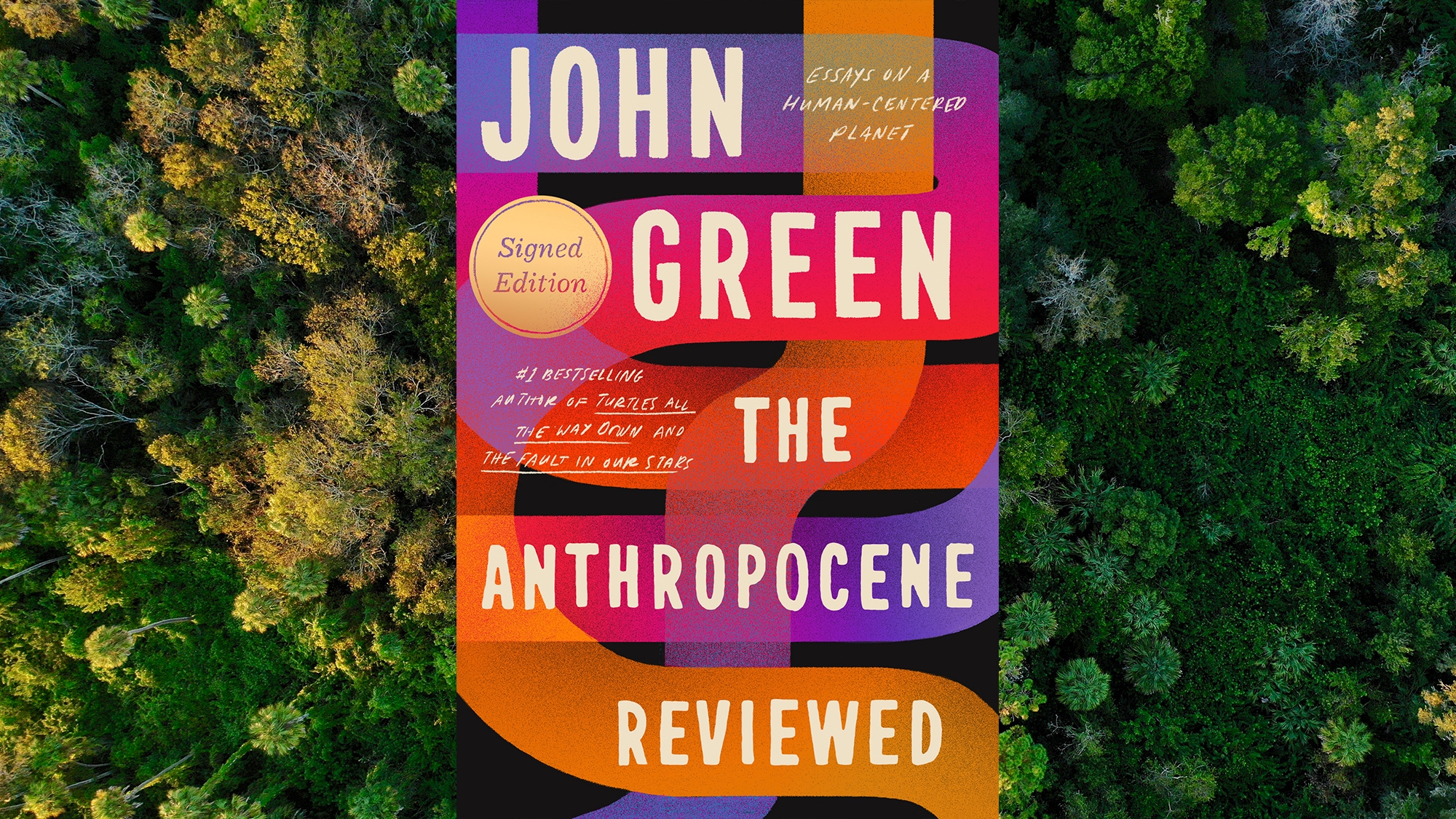In The Anthropocene Reviewed, John Green appraises everything from plagues to Dr Pepper

Scientists are divided about what we should call the current geographic time period. Most argue it’s the Holocene, which is marked by the retreat of glaciers nearly 12,000 years ago, but some say we’ve moved into a new period, the Anthropocene. The idea is that humans have now made such a large impact on the planet by manufacturing plastics, detonating nuclear bombs, and burning fossil fuels that we’ve established a new epoch. Depending on who you ask, it’s a useful term or yet another sign of mankind’s devastating hubris.
John Green, author of Turtles All The Way Down and The Fault In Our Stars, acknowledges it’s probably a bit of both. He began The Anthropocene Reviewed podcast in 2018 to assign five-star reviews to eclectic subjects ranging from Diet Dr Pepper to cholera to the Bonneville Salt Flats, examining what humanity has created and our relationship to the planet and the other species that live on it. Now most of those reviews and a few new ones are available in book form in The Anthropocene Reviewed: Essays On A Human-Centered Planet.
Fans of the podcast will get the least value from the book. While there are a few new reviews in the collection, such as an assessment of August Sander’s photograph Three Farmers On Their Way To A Dance, most of the book is taken directly from episodes of the podcast. Passages have been tweaked a bit to make them flow better in written form, and some have been slightly expanded, with tangents turning into footnotes or edited with new information like the continued growth of Canada geese populations. (That might be why Green signed every copy of the North American version of the book, giving fans a reason to buy one beyond revisiting a favorite subject without listening to commercials for Audible and life insurance.)
Those who haven’t listened to the podcast will find Green’s style akin to that of someone like Susan Orlean, combining deeply personal anecdotes with fascinating facts. The balance between them varies wildly, with an entry on Monopoly largely providing an origin story of the game combined with some scathing commentary on American capitalism, while the review of sycamore trees is barely about the plants at all and mostly about Green’s struggles with depression. The result is like falling into a Wikipedia hole if the entries were written as a form of therapy.
Still there’s a soothing quality to Green’s prose and his gentle assessment of humanity. Many of the essays were written since the COVID-19 pandemic began, and the format works particularly well for grappling with this tumultuous time in human history. His review of “plague,” which looks at some of the worst epidemics to affect the species, concludes that “Plague is a one-star phenomenon, of course, but our response to it need not be.”
The impact of the pandemic is less on the nose but still poignant in other essays. Green gives a glowing review to the song “You’ll Never Walk Alone,” the anthem of the Liverpool Football Club that was also sung by British paramedics in March 2020 to their colleagues in the ICU. A far too generous evaluation of “wintry mix” includes an adorable anecdote about how Green used some of his time in lockdown to build a garden for a groundhog that had been raiding his soybeans. By dwelling in the mundanity and strangeness of the pandemic, he manages to capture the feeling of living through history while still lacking the context by which to process it.
Green admits in his postscript that the book may be overfilled with quotes, with chapters peppered with lines from the likes of Emily Dickinson and Herman Melville. The apology feels unnecessary considering how powerful some of Green’s own prose can be. In a chapter on the Lascaux cave paintings, Green writes about how hard life was for prehistoric humans but notes “and yet somehow, they still made time to create art, almost as if art isn’t optional for humans.”
He expresses a similarly beautiful sentiment when writing about the World’s Largest Ball Of Paint, a roadside attraction where visitors have spent 40 years adding 26,000 coats of paint to a baseball. “Maybe in the end art and life are like the world’s largest ball of paint,” Green writes. “You carefully choose your colors, and then you add your layer as best you can. In time, it gets painted over. The ball gets painted again and again until there is no visible remnant of your paint. And eventually, maybe nobody knows about it except for you.”
The idea of geological epochs was defined by scientists searching through the fossil record for evidence of species that have been extinct for millions of years. The very idea of the Anthropocene requires the morbid thought that someday another species might sift through layers of rock and dirt for evidence that we existed. In a chapter on humanity’s temporal range, whose corresponding podcast episode originally aired at the end of March 2020, Green writes that when he told his brother and frequent collaborator Hank that he was worried about the pandemic, Hank responded, “The species will survive this.” While he’s honest about humanity’s failings, Green is also optimistic about our ability to grow and endure as a species. And should we fail, he’s at least hopeful that someone else will remember us.
Author photo: Marina Waters